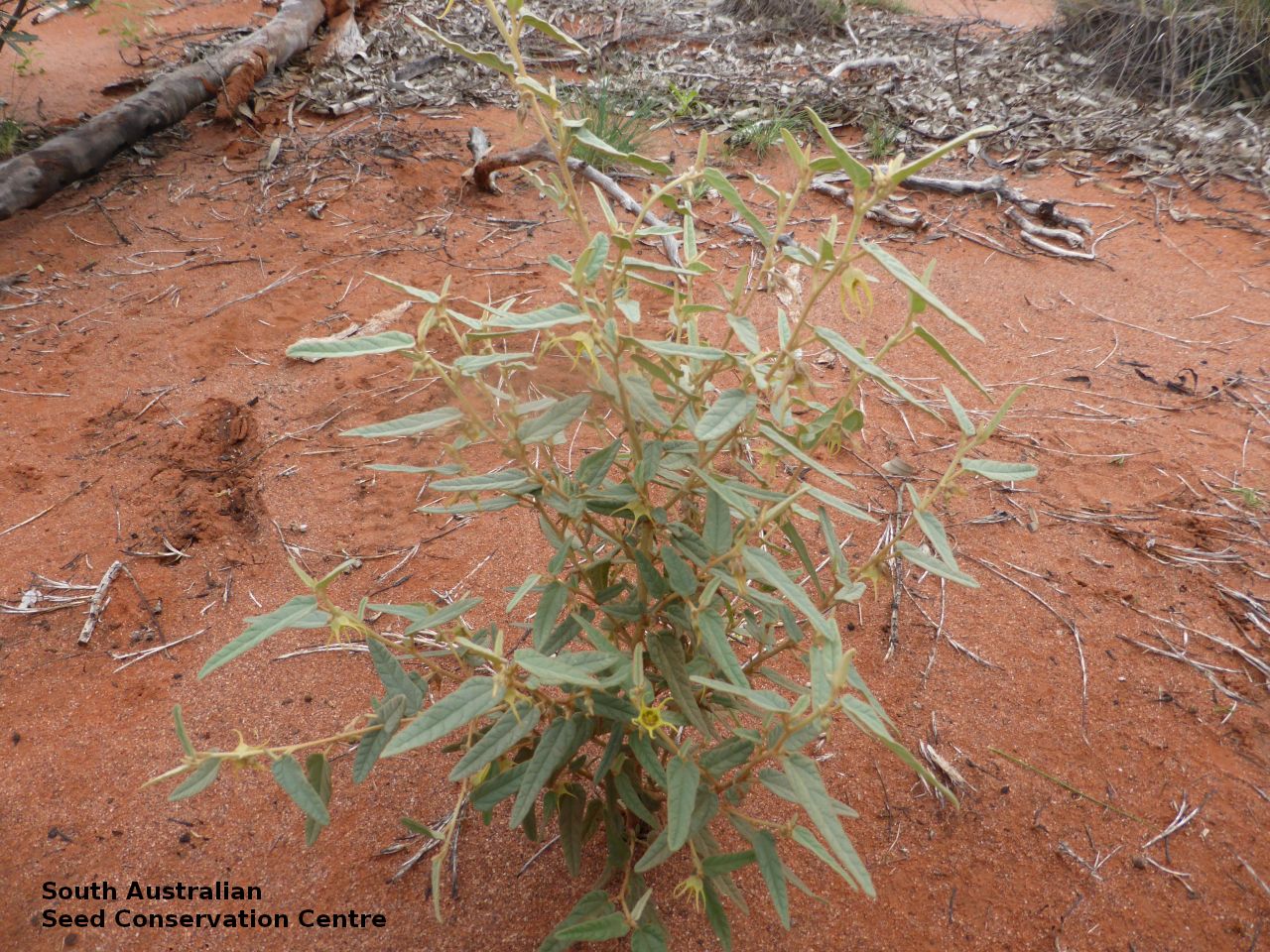
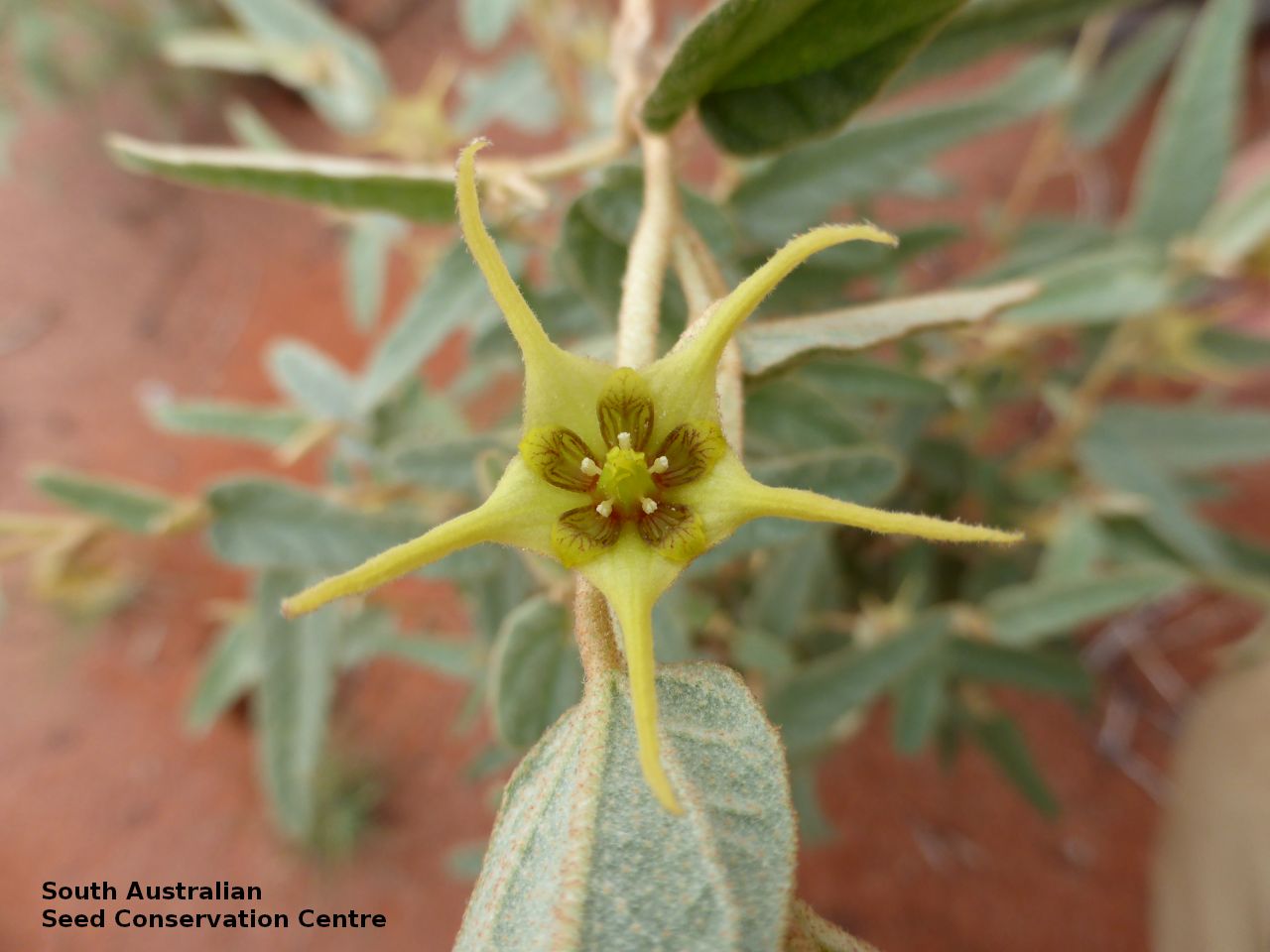
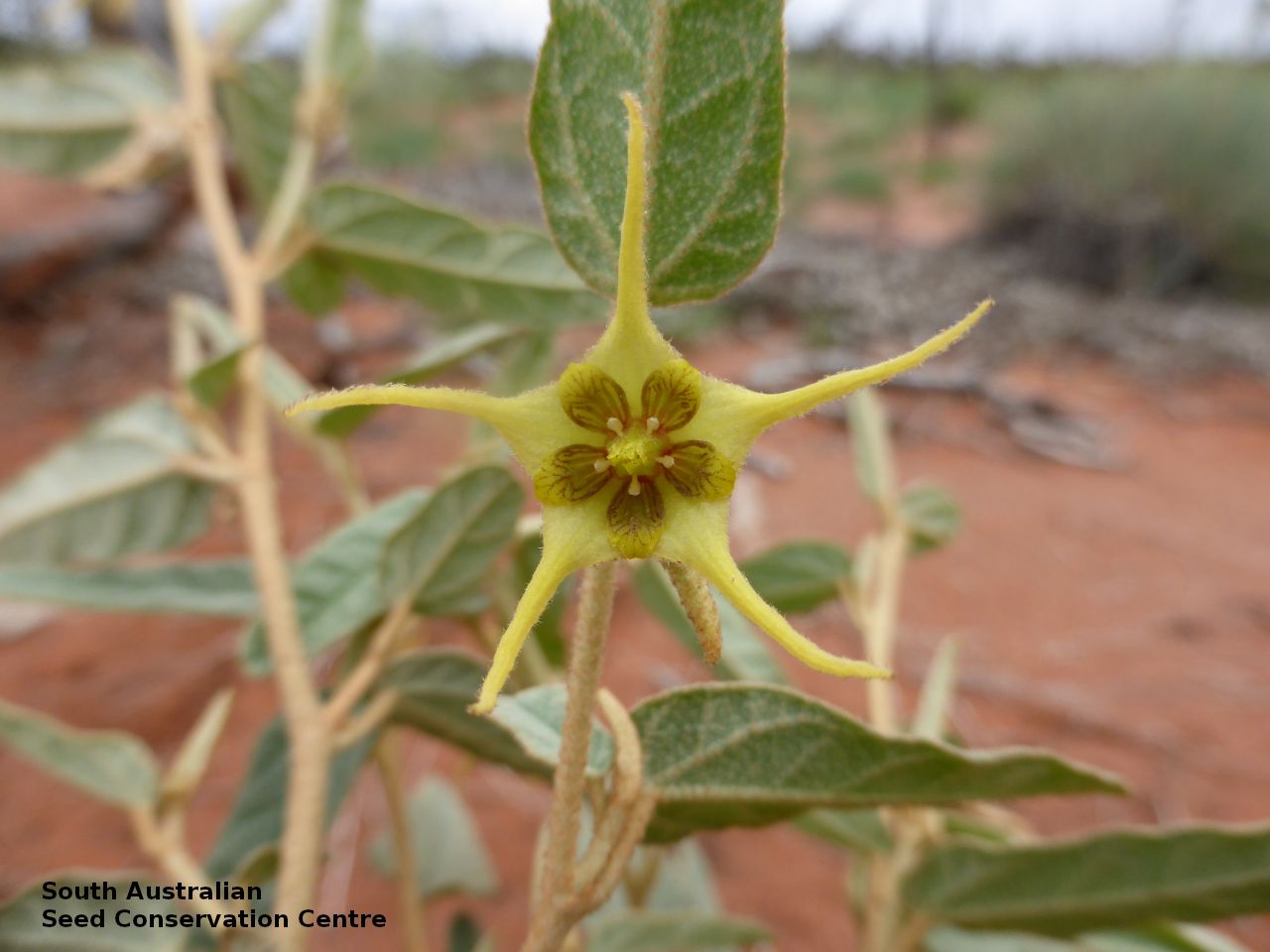
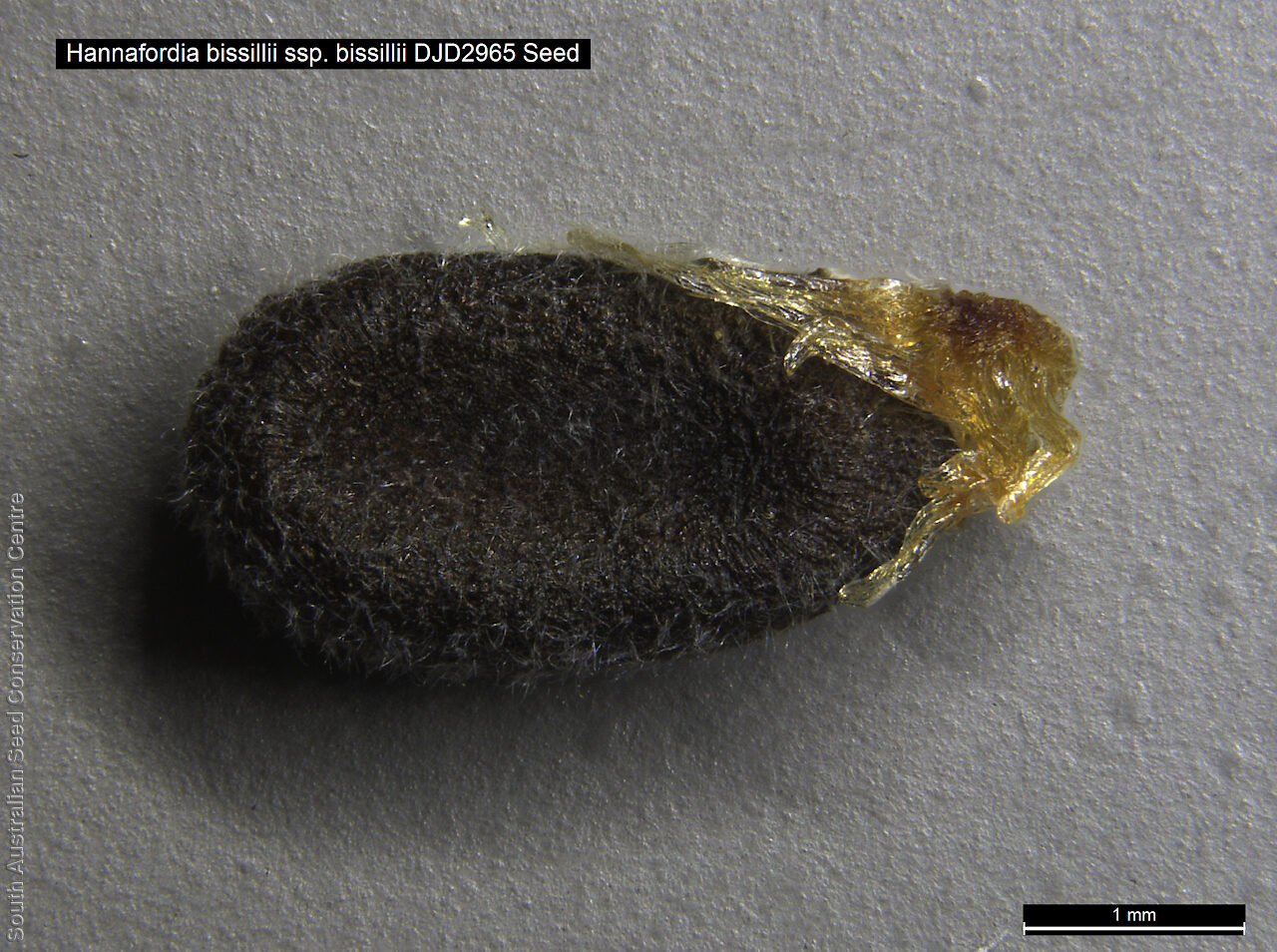
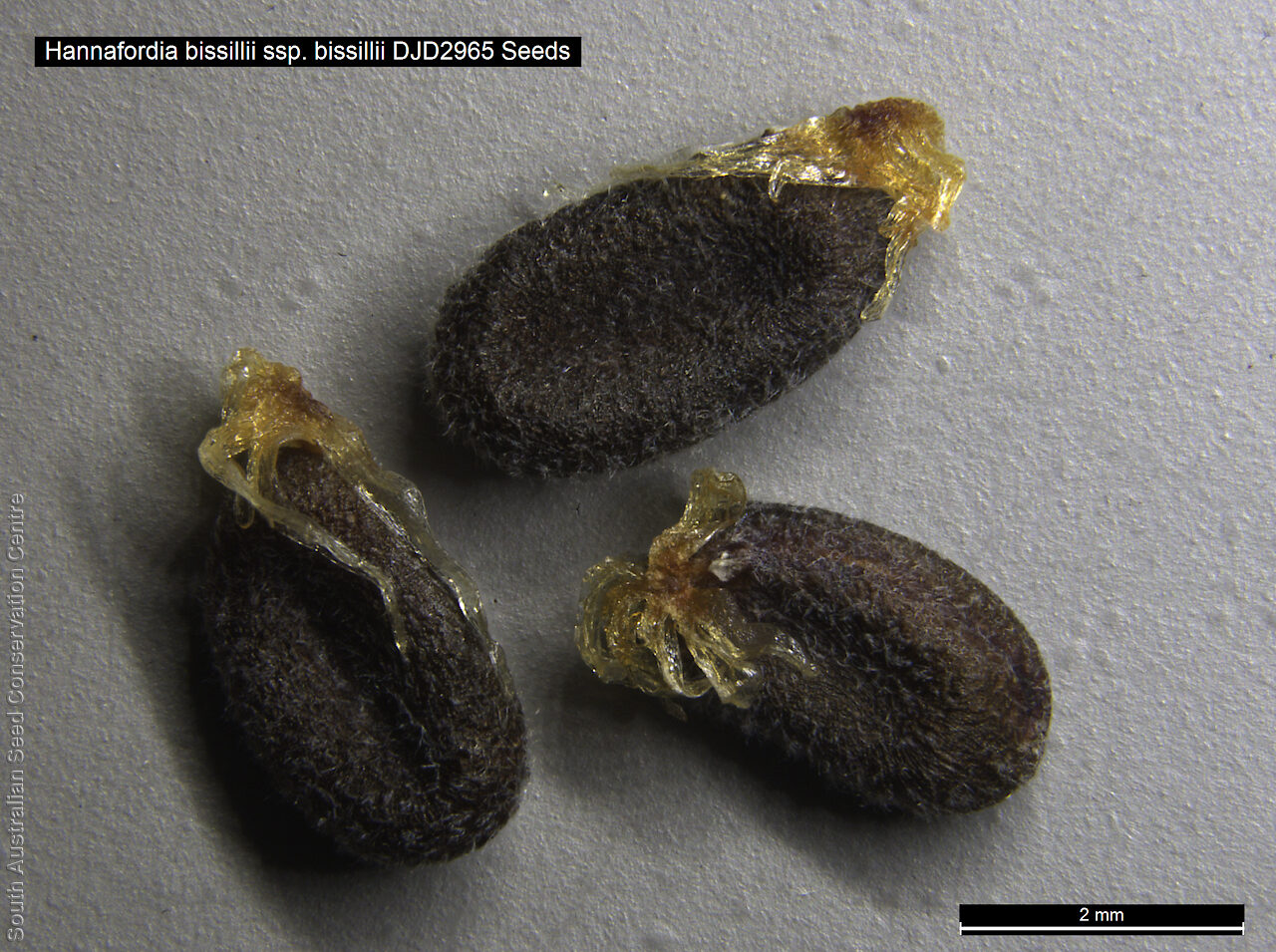

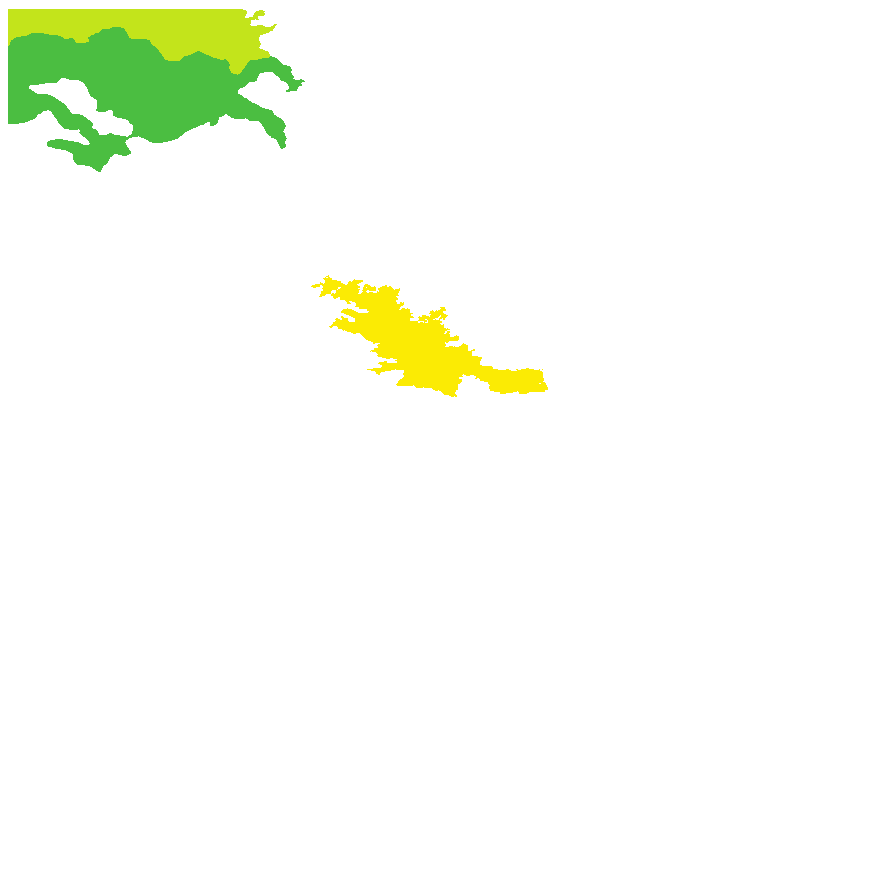
Botanical art
Prior names
Hannafordia bissellii
Etymology
Hannafordia named after Samuel Hannaford, 1828-1874, an English born naturalist who wrote extensively on botany and agriculture, and collected throughout his time in Australia, including cooperation with John Fereday to collect algae at Tamar Heads for Harvey. Bissillii named after Walter Kirk Bissill (also Bissell) (1842 - 1890), an English born plant collector who collected for Mueller in Victoria.
Distribution and status
Found mainly in the north-western corner of South Australia with scattered records from the Nullarbor area, growing in red sand. Also found in Western Australia, Northern Territory, Queensland and New South Wales. Native. Uncommon in South Australia. Uncommon in Queensland and New South Wales. Common in the other States.
Herbarium regions: North Western, Lake Eyre, Nullarbor, Gairdner-Torrens
NRM regions: Alinytjara Wilurara, South Australian Arid Lands
AVH map: SA distribution map (external link)
Plant description
Woody evergreen shrubs to 1 m high with dense stellate hairs on the leaves and young branches. Leaves oblong to lanceolate, to 60 mm long and 10 mm wide, with brownish stipules. Flowers bisexual, solitary or paired, yellow pentagon-shaped flower with 5 long narrow filaments. Possibly flowering throughout the year. Fruits are brown hairy capsule to 10 mm diameter. Seeds are orange reniform seed to 3.5 mm long and 2 mm wide, covered in hairs.
Seed collection and propagation
Collect seeds between January and December. Capsules can be collected prior to splitting as long as the seeds inside are hard and brown. Place the capsules in a tray and leave to dry for at least a week. Rub the dried capsules by hand to dislodge the seeds. Use a sieve to separate the unwanted material. Store the seeds with a dessicant such as dried silica beads or dry rice in an air tight container in a cool and dry place.